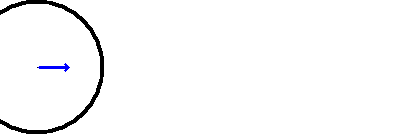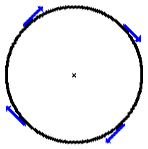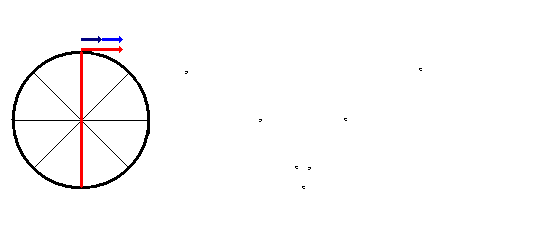

The wheel just undergoing regular translational motion

The wheel rotating about a fixed point.

This one may be a bit confusing at first, but after you think about it a bit
it is rather simple. As you can see in the first two animations there is simple
motion. One is just rolling in place and the other is moving along in a straight
line. Rolling motion is simply the sum of those two. In the third animation
the two blue vectors are the translational and rolling vectors from the other
two animations. The vector addition of these two gives the red vector. Notice
also the little dots, these trace the location of the point which we are observing
as the wheel rolls. If you connect them together the points will make a cycloid.
Note as well the line that stretches from the bottom of the wheel to the vector
of rolling motion. That point at the bottom is the point about which the wheel
is actually rotating at that instant. As you can see rolling vector is perpendicular
to a line stretching from that point.
An important point to remember is that rolling motion cannot occur on a frictionless surface. The thing will simply slide along. In the case of something rolling down an incline if the angle of the incline is very large or the inclines coefficient of friction is very small the sphere will also slide. To get pure rolling motion the force of friction must be less than the normal force times the coefficient of friction.